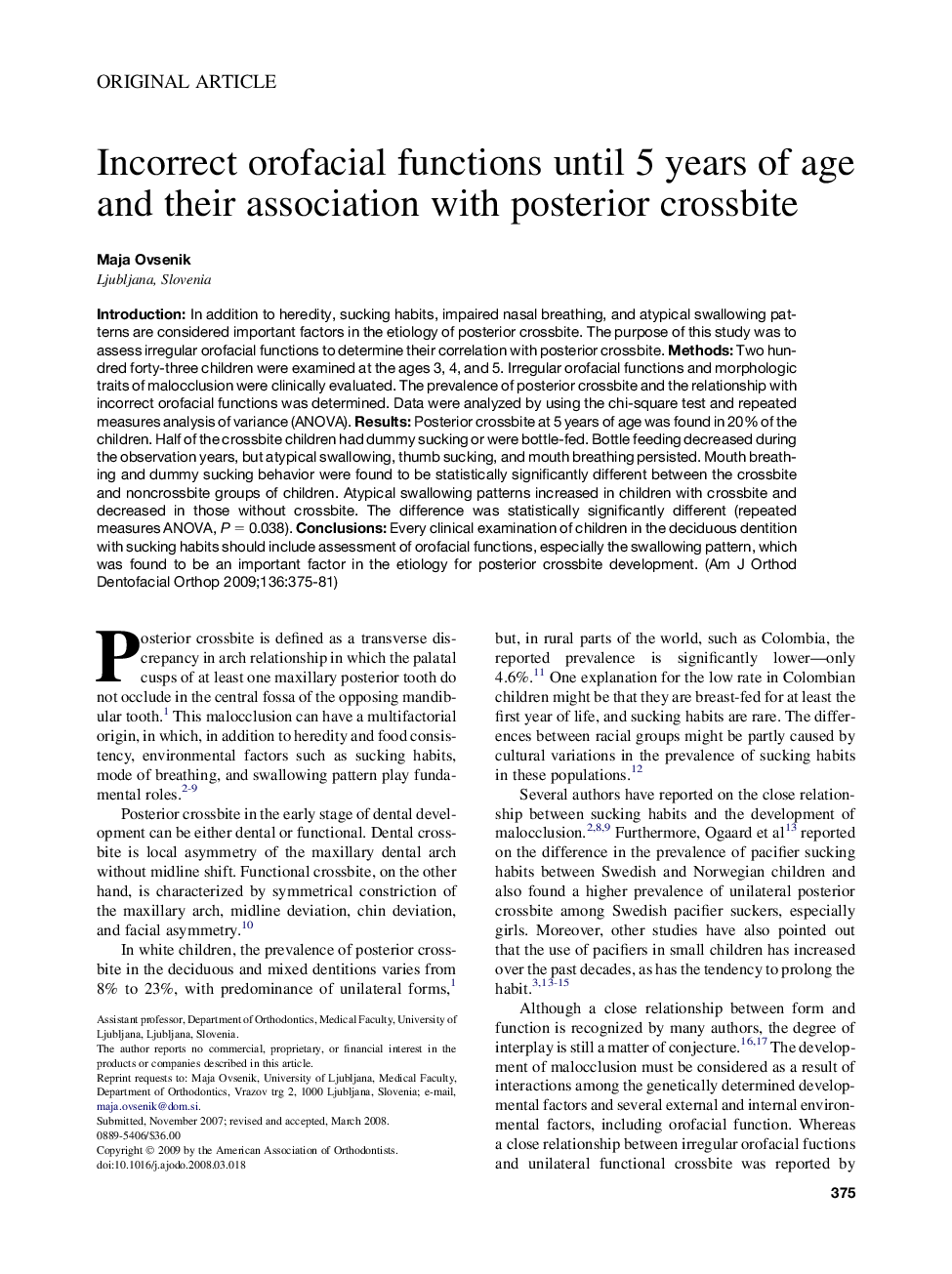| Article ID | Journal | Published Year | Pages | File Type |
|---|---|---|---|---|
| 3118684 | American Journal of Orthodontics and Dentofacial Orthopedics | 2009 | 7 Pages |
IntroductionIn addition to heredity, sucking habits, impaired nasal breathing, and atypical swallowing patterns are considered important factors in the etiology of posterior crossbite. The purpose of this study was to assess irregular orofacial functions to determine their correlation with posterior crossbite.MethodsTwo hundred forty-three children were examined at the ages 3, 4, and 5. Irregular orofacial functions and morphologic traits of malocclusion were clinically evaluated. The prevalence of posterior crossbite and the relationship with incorrect orofacial functions was determined. Data were analyzed by using the chi-square test and repeated measures analysis of variance (ANOVA).ResultsPosterior crossbite at 5 years of age was found in 20% of the children. Half of the crossbite children had dummy sucking or were bottle-fed. Bottle feeding decreased during the observation years, but atypical swallowing, thumb sucking, and mouth breathing persisted. Mouth breathing and dummy sucking behavior were found to be statistically significantly different between the crossbite and noncrossbite groups of children. Atypical swallowing patterns increased in children with crossbite and decreased in those without crossbite. The difference was statistically significantly different (repeated measures ANOVA, P = 0.038).ConclusionsEvery clinical examination of children in the deciduous dentition with sucking habits should include assessment of orofacial functions, especially the swallowing pattern, which was found to be an important factor in the etiology for posterior crossbite development.
